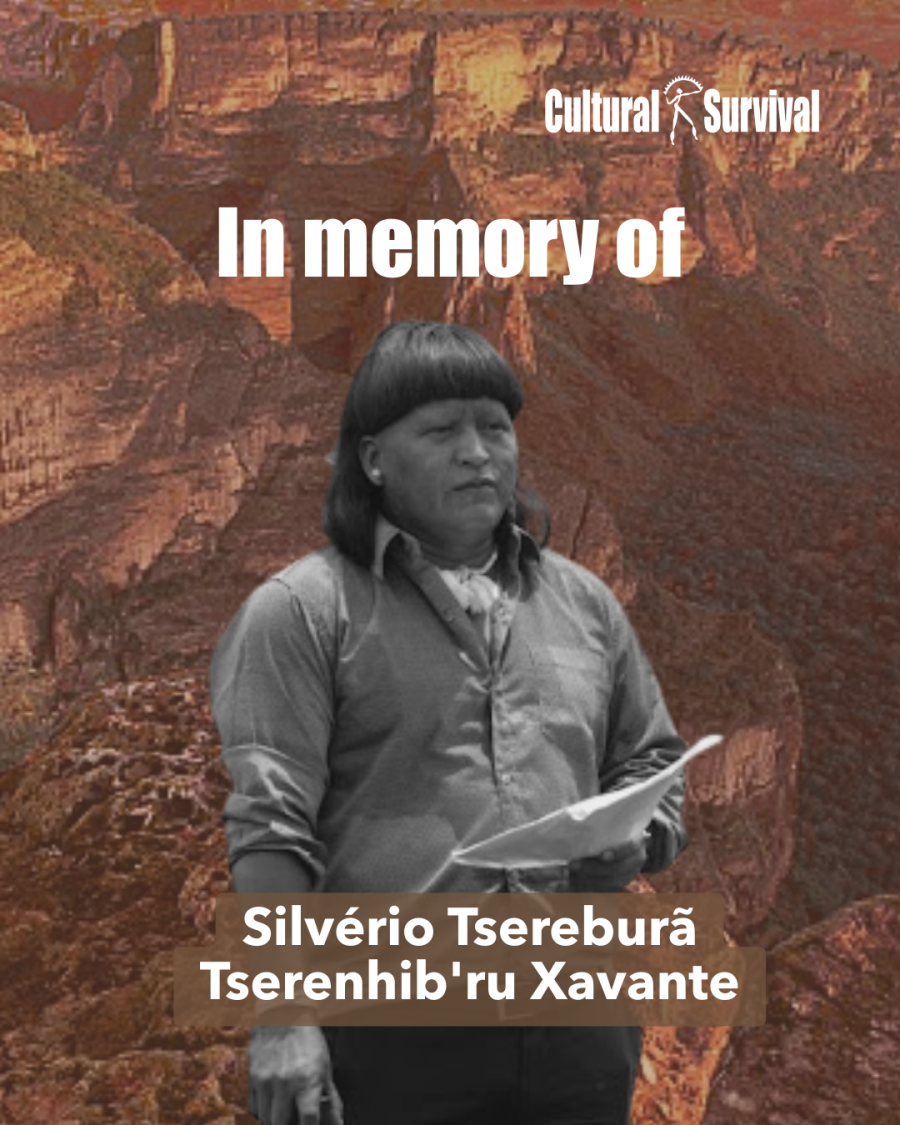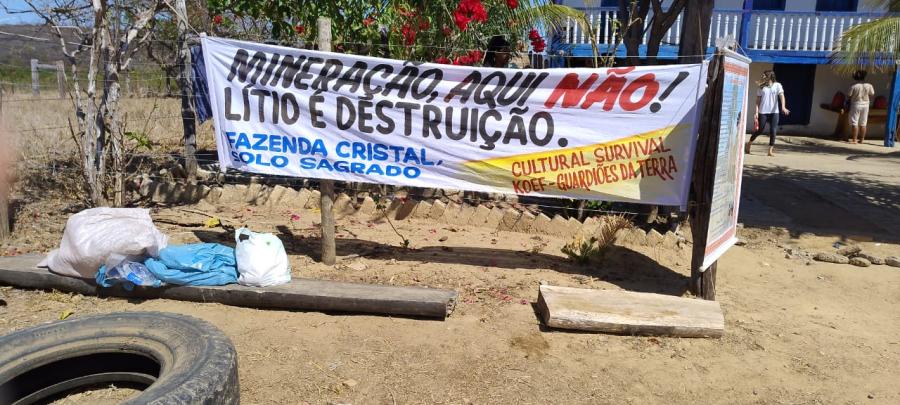Ten years before Almir Narayamoga Surui was born, in the 1970s, the Surui tribe of Brazil consisted of 700 people living traditionally in the Amazon rainforest in the state of Rondonia. But the construction of a paved road and a forced increase in interaction with missionaries, loggers, and farmers, brought diseases such as influenza, measles, and pneumonia, which wiped out 500 tribe members, including all Surui elders, leaving only 200 survivors. Although the tribe has since grown to about 1,200, outside contact has also increased, bringing with it illegal logging that depletes the rainforest of 18 truckloads of trees a day and threatens Surui culture.
Almir, now 32, is an environmentalist, political activist, and tribal chief who has been fighting to save both his Surui tribe and the rainforest for more than 15 years. His efforts are credited with almost single-handedly bringing his tribe back from the brink of extinction, and they have certainly brought unprecedented attention to the tribe’s situation. Perhaps his most notable achievement has been his partnership with Google Earth, which the Surui use to capture vivid images of loggers and miners encroaching on their 618,000-acre reservation. Those images not only give proof of incursions that can prompt action by the government, but they actually discourage incursions in the first place, because loggers and miners know they’re being watched.
In 2008 Chief Almir was in Geneva to receive an award for his work from the International Society of Human Rights. In 2009, he attended the United Nations Climate Change Conference in Copenhagen, where Vice President Al Gore congratulated Almir for his innovative work with Google Earth. Despite these accolades, or perhaps because of them, Almir has been targeted with death threats and other violence, but he shows no sign of letting up on his efforts to save his people’s forest.
In 2009, Chief Almir was at the UN Permanent Forum on Indigenous Issues and took time to sit down for an interview with Cultural Survival’s director of operations, Mark Camp. Below are excerpts of that interview.
Mark Camp: You make a distinction between the words “responsibility” and “sustainability.” Can you explain what you mean?
Chief Almir: “Responsible” is a word that my people use to indicate that development has to happen with human consequences in mind. The world is full of this beautiful concept called sustainability, and if sustainability were guaranteed by politics everything would be fine. Unfortunately this does not happen, so a concrete action with responsibility aiming at the future is what we believe to be one of the best ways of maintaining the forest. We are talking about the forest, you see, and within the forest there is economy, culture, religion, languages. Actually, the forest is complete life, and it is the forest that gives strength to human beings to fight for the welfare of humanity. How many donors give to destroy the forest? I’m talking about huge donors such as the World Bank and others that finance development. That’s not an action of responsibility, and that’s just one example.
And yet they say that this is sustainable development?
Yes, they do say that, and they say that even though in Brazil, actions such as these have extinguished many Indigenous Peoples. This happened in the past, and it is still happening. For example, in my state of Rondonia the World Bank is financing the hydroelectric dam on Rio Madera that’s going to extinguish the people. These people don’t speak Portuguese, and they don’t have a way of defending themselves in writing. So, what happened 500 years ago in Brazil is still happening now, 500 years later. But there’s research and technology so that this shouldn’t have to happen. I’m not saying that development shouldn’t happen; of course it has to exist. But once again they have to have a responsibility plan. Because development has a mission to bring back the quality of life and not kill human beings.
When did you start to make the connection in your mind between the survival of the Surui and the forest and the connection to all of humanity? Do you remember when you first started to think about the forest in that way?
When you ask this, I feel a lot of emotions, because it is something really painful for me to remember. There were thousands of invaders within our territory, and when I saw trees being destroyed, I saw that along with this forest, the history and the life of my people were going down. I was only 14, and 3 years later I became a leader and I started searching for the courage to defend the forest and our people against these actions. I realized that I needed to look for partnerships, but in order for you to be a chief you have to have strategy. And this strategy has to be well thought out, because you are dealing both with your people and with the rest of the world. There is no way of saying that you are just going to think about your own people.
My people do not have technological knowledge; my people have the traditional knowledge of nature and the forest, and we needed to consolidate these two bodies of knowledge. It took a long time for this to happen, but now it really is happening, and one of the examples is this interview. Nobody asked for that before. This transition resulted from this strategy that I thought about 14 years ago. We saw that we can’t achieve justice through war. We can achieve justice by showing people the future and giving responsibility to each and every person who is not doing his or her share. We do not want the kind of war that involves killing somebody; we want the kind of war where people have to guarantee the existence of future generations. We want to contribute through the example of our forest the idea that we have to maintain the climate. Climate change will mean the end of the rainforest for mankind, but we can correct and change our path, and that is what we need to communicate, using technology. That’s why we would rather put our bows and arrows away and get allied with journalists like you and put this out there for the world.
We neither want to rely solely on technology nor solely on our traditional knowledge. We want them to walk hand in hand, side by side, one helping the other, like one little ladder going up. We want to shock the world, to wake the world up: let’s get up, let’s wake up, let’s create our future. Because then the United States itself will be able to keep its history.
Can you tell me about your experience with Google?
Today Google is one of our best partners in communication. They taught us how to advance our cause on YouTube and provided us with many tools, and this by itself is already a huge advancement for us in the field of communications. It was not easy to build this relationship, because the technology companies have their own vision in regard to Indigenous Peoples. In March 1997, I was in San Francisco, and I went to visit Google headquarters and asked them for a partnership. I told them that technology not only can support promoting the issue of deforestation, but also can promote how the Surui people are planning to avoid deforestation. They really liked what I proposed.
Today Google has three training courses, and we are going to continue these partnerships and training. It’s not like they are coming and doing it for us; they are teaching us so that we can use Google tools to do this ourselves. So far I think it is wonderful. I have visited 28 countries, and people wouldn’t ask about me—they would ask “how is the project with Google going?” So this gave a lot of publicity to the global project and to the Surui people. I still think Google has a lot to do, but it has fulfilled some parts of its social commitment, its commitment to mankind, its duty in respect to mankind and us as well.
Can you talk about the four clans and bringing the community together to build a common strategy and a management plan? I’m sure that was very complicated and required a lot of compromise and discussion within the community. Would you be willing to share with us some of the greatest challenges and some of the lessons that you learned in that process?
Indeed, this type of work is very complicated, especially because we are discussing a plan that could guarantee the future but with zero dollars. If people are not seeing the implementation of this plan or a lack of resources, they get discouraged. So this moment is a great challenge for a leader to get people to continue believing in whatever is being built by us. At the same time, loggers are showing bags of money to them. But we have big plans, big programs to be accomplished, including the participation of all these clans. An example is our reforestation program. We plan to plant more than one million trees. We’ve planted 100,000 so far, but there is still a lot to be implemented. That’s how we consolidate the thoughts of the people.
Some people think that we will eventually have management of our own territory, and we want that so much that I think this is possible. As I’ve said, I have visited 28 countries, and I am participating in the International Funders for Indigenous Peoples conference. On Monday we are hosting more than 40 people, all from outside of Brazil. Three or four years ago we wouldn’t have thought that this was even remotely possible. But what really matters is that these people are coming to visit to see with their own eyes the issues that we are talking about. With luck, some of them will support us.
Editor's note: Filmmaker Denise Zmekhol was instrumental in helping set up the interview with Chief Almir. To learn more about her film about Chief Almir, Children of the Amazon. click here.



